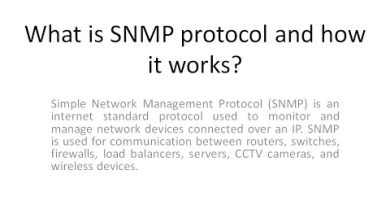SMB vs NFS vs AFP vs iSCSI – What are they and which should you use
This tutorial goes over the difference between the most common file transfer protocols which allow you to easily share files from your NAS to your Mac or Windows computer.
Hire Me! https://www.spacerex.co/hire-me/
Sponsor the Channel: https://www.youtube.com/c/spacerexwill/join
SMB – Best for large file transfers & general use
NFS – Best for low latency IO while still being file level storage
AFP – Deprecated used to be best for MacOS transfers
iSCSI – Block level file transfers
#NAS #Tutorial
Connect MacOS to your NAS using SMB: https://youtu.be/k6tYroePtGs
Connect Windows to your NAS using SMB: https://youtu.be/mwo1dpYkq6U
Top Synology Picks: https://www.spacerex.co/what-synology-should-you-buy/
Affilate Links:
Synology Recommendations:
Cheapest you can buy:https://geni.us/EJz4c
Most powerful 4 Bay: https://geni.us/pO2pcSJ
6 bays, with performance overhead: https://geni.us/GPSdKp
Insane Performance!: https://geni.us/N9BcW
12 Bays in a Desktop!: https://geni.us/vavmdU
Drives:
Hard drives that I use: https://geni.us/00RP
SSD I use with Synology: https://geni.us/2ZxlwE
Going 10GbE:
Synology 10GbE (RJ45) Card: https://geni.us/SrJZ
Starter 10GbE switch: https://geni.us/RrhEfj
10GbE ethernet to Thunderbolt 3 adapter: https://geni.us/Aa5qm
*These are affiliate links, which means that if you purchase a product through one of them, I will receive a small commission (at no additional cost to you). Thank you for supporting my channel!
by SpaceRex
linux ftp server




thanx for the info! you have a very pleasant voice by the way.🙂
Very handsome, smart man.
Thanks for answering my question in the first minute. Time is an asset. Like and subscribe.
0.75 speed is needed here
Straight to the point, thank you!
@spacerex would you recommend nfs for synology to synology connections on the same LAN?
Thanks! SMB it is!
This helped me alot for one of my components with my diy home server! Thank you Barry Allen!
Been looking at this SMB versus NFS for my NAS to a bunch of micros services on docker… I think you’ve convinced me to go with SMB, at least for now
if I want to work on my .DWG file from Autocad, do I have to copy paste to my computer then work on it and upload it again to my NAS after i finished working? or I can work directly from NAS without having to download and upload it every time I work on it?
Thank you for the explanation! I was able to solve (I think?) a problem I had. I bought a Terramaster for home use with an iMac. I connected using smb at first, but something weird happened. After I coppied some files to the HD, they looked 'buggy' when I oppened them from there. For example, if I opened a JPEG, only the top third of the image would load. The rest would look weird or not display at all. Maybe a loading issue? But when I switched to afp now everything opened correctly. Maybe I was doing something weird before?
So what is the fast service for MacBook ? is ssh fast? thanks to your return
Thanks for the nice video!
So I use SMB for the bulk storage, and then set up one of my SSDs with games as iSCSI. At least that's what I understood here, if I'm wrong I'll figure it out soon enough 🙂
great explanation
Hello and thank you very much for the useful video! Question : have you heard about files and folders' names corrupted while switching from AFP to SMB? (ex: ALDUVB~G) My DSM update warns me that I should now disable AFP because it's no longer supported by Apple. I did it and switched to SMB, but many of my folders/files names are mangled. Is there a way to fix this problems for all the folders previously stored on the nas? And is there a way to avoid the problem in the future? Thanks a lot for your help!!
This is the exact video I was looking for. All these tutorials on YT and you are the first one I've come across to actually bother to explain when and why you would use one over the other. Thanks! Added to my long term reference list for linux info.
I think you made the only video that explains iSCSI decently 😭
I gotta problem, I'm trying to learn Linux, using a proot install of Debian on top of android, I want to be able to mount a windows directory in the Debian system so I don't use all the memory on my phone, I also don't have root on the android.. if you are not familiar with proot it allows an apparent root install of another operating system on top of Android, problem is it reuses the kernel and a lot of the base file system, mounting on top of it for it's own uses, so if you don't have root on Android you don't get permissions to change anything in those directories. That means of course you can't install kernel modules. You would think I could use a fuse file system because it's user mode but apparently it requires some changes in some directories I do not have access permission to.
NFS does seem to be available, and I did manage to get an NFS server to work on Windows 7 and I verified as accessible using a friend's laptop, but despite using the exact same command with the exact same version of Debian to access this clugy Windows 7 NFS server, I get access denied when trying to do it from my Debian on Android. I tried packet sniffing to see what the difference was, the RPC calls are very similar and I can't understand enough to tell the difference.
Can you give me more insight into NFS, so I can figure out why it works with the one system and not the other?
Can you recommend a user mode Linux client that doesn't rely on fuse and Windows 7 server combination for a network a file system that I can mount on the proot based Debian machine ?
I haven't tried iscsi yet , does iscsi have a user mode Linux client where I can mount the network directory and a Windows iscsi server that will work on Windows 7 or earlier?
I've been told of various SSH and FTP packages, but none of the ones that have been recommended that I have tried meet my requirement to be able to be transparently mounted.
I want to be able to use the free space on that old Windows machine so I don't fill up my phone. That includes installing some packages directly on it using it for live working temp files and more
Any recommendations (short of buy a new system) will be highly appreciated!
I’d like to add. NFS is a pain in the ass when it comes to authentication and data in transit encryption
Did he say Mac server? 😂😂😂😂
yes…. now i know. good explanation.
Can my friend in another location connect to my server with smb?
Some thoughts from a Mac perspective…
SMB on a Mac is NOT working just fine. If you have a workload involving a lot of random I/O instead of just copying individual large files around, it's barely usable at all. Connections will drop left and right, corrupting files in the process. It's okay for keeping media files, but don't use it for anything remotely database-like. Warning: MacOS's own Photos app gets abysmally slow when put on SMB and will quickly shred its Photos Library.
AFP on a Mac is defunct, just don't use it. It's been deprecated for a reason and nobody at Apple has been working on it for many years.
NFS on a Mac is solid in terms of stability and speed, but NAS vendor's implementations – each differently – struggle with keeping Apple's special file attributes. If you use file tags, individual file settings (like "hide .pdf extension" or "open this file with that app") or even custom named attributes (like "recursively exclude this directory from being backed up by QRecall"), you can pick the NAS vendor that does some of the features you need most, but you can't have all of them and even the supported ones don't work reliably.
iSCSI on a Mac is NOT fast. Depending on the driver software you use (which can cost you an arm and a leg) you can expect to get less than half of what SMB can do through the same network connection. Especially on Apple Silicon Macs where you can't use kernel extensions for that anymore the situation is currently … dire. That said, t is absolutely rock solid in terms of stability, so having an APFS-via-iSCSI volume on your NAS may be your only (sensible) option for database/VM applications besides using direct attached storage.
Seeing that Drobo is defunct despite claiming otherwise – they haven't sold a unit in years, don't react to contact requests and aren't likely to ever start again – the market for DASes for Macs is rather slim. Don't fall for QNAPs ads for Thunderbolt 3 attached NASes – they use that connection to emulate a very fast network card, it's still a NAS with all of the gotchas above.
So, what to do if you have an M1/M2 Mac and want to put your Photos library, VMs and database projects outside the tiny/expensive internal storage, and/or use a more sophisticated backup solution than Time Machine? Either fit everything on a TB-attached SSD, or use iSCSI with Daemon Tools. It's certainly very slow but also super cheap and may bridge the time until other affordable solutions have made the jump to Apple Silicon. In my case it was actually cheaper to buy 2.5G NICs for NAS and Mac than to buy a license that would fully saturate the built-in 1G NICs.
Also: always remember that "NAS" != "backup". You only have a backup when you have two separate copies of your data in different locations. Snapshots, RAID etc. are not a backup strategy, go get a proper backup drive for when your NAS just dies and takes everything with it.
very great explanations
Good job here man. I gave you a sub awhile ago. Your synology videos are good and if I need an explainer on a feature you’re my first choice. Keep up the good work
Thank you – I look for your videos whenever I'm trying to figure out anything with my Synology NAS. Appreciate you knowledge.
Great video
Thank you, this is just the information I needed to learn.
Thanks you so much!
I was just looking for the simple answer, thanks!
Thank you for the simple explanation!